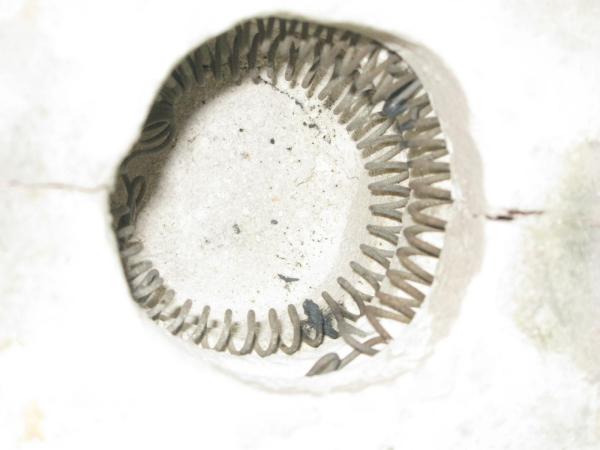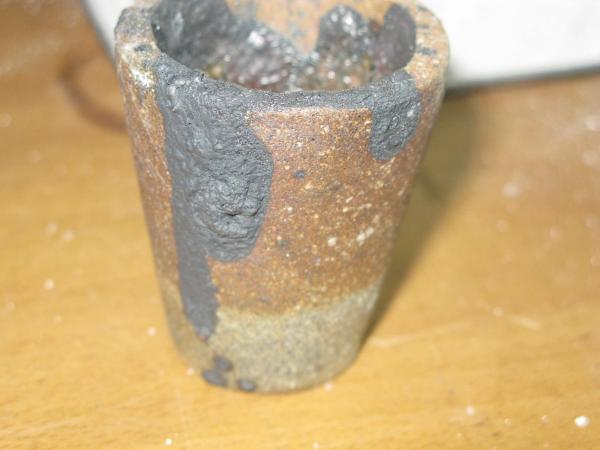metalresearcher
National Hazard
   
Posts: 731
Registered: 7-9-2010
Member Is Offline
Mood: Reactive
|
|
Refractory bricks @ $189 each ???
These bricks look promising for the temperature resistance but the proce ??
http://www.buyrefractory.com/CPStorefrontend24/CandyPress/sc...
Is $189 the *per brick* price or per unit of package ? When it is per brick it is brutally expensive.
Your ideas ?
|
|
|
watson.fawkes
International Hazard
    
Posts: 2793
Registered: 16-8-2008
Member Is Offline
Mood: No Mood
|
|
Looks
like per-brick. It's 99.9% alumina, after all.
|
|
|
Contrabasso
Hazard to Others
  
Posts: 277
Registered: 2-4-2008
Member Is Offline
Mood: No Mood
|
|
Custom brick $200
Stock size brick $64
Don't buy custom, design round standard sizes!!
|
|
|
zed
International Hazard
    
Posts: 2277
Registered: 6-9-2008
Location: Great State of Jefferson, City of Portland
Member Is Offline
Mood: Semi-repentant Sith Lord
|
|
Make your own.
|
|
|
Magpie
lab constructor
    
Posts: 5939
Registered: 1-11-2003
Location: USA
Member Is Offline
Mood: Chemistry: the subtle science.
|
|
For perspective, here's some more reasonably priced firebrick for ~$7ea:
http://www.seattlepotterysupply.com/Merchant2/merchant.mvc?S...
They are good for 2800F (1538C). What temperature must the bricks withstand?
The single most important condition for a successful synthesis is good mixing - Nicodem
|
|
|
metalresearcher
National Hazard
   
Posts: 731
Registered: 7-9-2010
Member Is Offline
Mood: Reactive
|
|
Normally I use 1400oC rated firebricks which suffice for most applications (e.g. metal melting).
But for arc melting experiments I want to have MgO or CaO based bricks which do not melt too fast.
The 1400oC rated bricks melt like styrofoam when an electric arc is close to it.
Is alumina really so expensive ?
|
|
|
watson.fawkes
International Hazard
    
Posts: 2793
Registered: 16-8-2008
Member Is Offline
Mood: No Mood
|
|
High-purity alumina formed into refractory products is indeed that
expensive. The difficulty is fusing alumina particles together without another material to form a lower-melting compound at the grain boundary.
|
|
|
franklyn
International Hazard
    
Posts: 3026
Registered: 30-5-2006
Location: Da Big Apple
Member Is Offline
Mood: No Mood
|
|
Stated maximum use temperature of this alumina brick is 1900 ºC
seems expensive to me considering the low performance.
Hafnium Carbide is the most refractory binary compound known ,
with a melting point over 3890 °C. - http://en.wikipedia.org/wiki/Hafnium(IV)_carbide
Tantalum Hafnium Carbide ( Ta4HfC5 ) has the highest melting point known
of any compound , 4215 °C. - http://en.wikipedia.org/wiki/Tantalum_hafnium_carbide
http://qna.rediff.com/questions-and-answers/can-anyone-tell-me-the-price-of-tantalum-hafnium-c/12978195/answers
http://www.ultramet.com/ceramic_protective_coatings.html
http://ntrs.nasa.gov/archive/nasa/casi.ntrs.nasa.gov/1965000...
.
|
|
|
peach
Bon Vivant
    
Posts: 1428
Registered: 14-11-2008
Member Is Offline
Mood: No Mood
|
|
As contra says, first of all you need to not look at the custom brick sizes.
They are expensive even in the stock sizes, yep.
I have some similar to that, for lining the overhead steel transfer crucibles at foundries. They weigh about three times more than a normal clay house
brick and they're fk'ing bulletproof by comparison, they're not at all easy to cut, drill and shape, so have a design in mind that doesn't need a lot
of that doing.
The place I bought them from was doing cutting and drilling for the commercial customers, who are basically the only people they usually get inquiries
from. The guys were walking around in head to toe, hooded bunny suits with belt fed, full face respirators on to keep the dust out of their lungs and
eyes, and the place looked like a scene from the end of Scarface there was so much white powder floating in the air.
[Edited on 13-10-2010 by peach]
|
|
|
metalresearcher
National Hazard
   
Posts: 731
Registered: 7-9-2010
Member Is Offline
Mood: Reactive
|
|
Used for lining ladles for the steel industry ?
When these bricks are not so easily ground, an angle grinder with hardware shop grade a balde with diamonds suffices I think ?
|
|
|
peach
Bon Vivant
    
Posts: 1428
Registered: 14-11-2008
Member Is Offline
Mood: No Mood
|
|
Yep, those kind. They're serious stuff! The,
"Climb in that bitch and start laying bricks" kind. 
I'll take a photo later if I can for you, I'm in the middle of sanding floors at the moment.
I tried a diamond disc, and it wasn't cutting very well at all, but I can't remember if I was using a ceramic type diamond blade or a daisy wheel
kind. I seem to remember trying to break them using the old, score a line and smack with a chisel method. I managed to split one like that. They are
workable, but they're annoying compared to normal bricks. And especially those aerated ones you can cut with a wood saw. The density is massive, and
the material is very tough.
I've since taken the furnace I built with them apart and kept the bricks, but I'll be rebuilding it sooner or later with some kanthal or something
similar. Probably nichrome for a start. And I'll probably line the outside of the refractory bricks with those aerated concrete ones to get the U
value up.
I'll report back about cutting them if I have to make any cuts.
If you're thinking of making a more complex form, you can buy the same stuff as castable refractory. That also makes it easier to get a vacuum tight
seal on the furnace for degassing metals or running strange elements. Dental and lab furnaces are built like that, the bottom loaders. The top part
looks like a tall top hat, all cast as one solid lump, with the element spiraling round inside. Then the base raises up, with the work on it, and
plugs the base of the top hat, meaning there's only one joint to worry about getting a semi-decent seal on.
Now you can make you own foamy metal! 
[Edited on 14-10-2010 by peach]
|
|
|
metalresearcher
National Hazard
   
Posts: 731
Registered: 7-9-2010
Member Is Offline
Mood: Reactive
|
|
Never touch Kanthal wire with molten metal !!
Kanthal is not a success with me. I burned out a second coil in 3 days 
I let it cool down and am going to inspect the coil.
I found out that Kanthal is *very* temperature sensitive, despite I lower power when the coil looks yellow hot it still burns out. It is an old coil
which I got from someone who has a pottery kiln it may be lower quality (e.g. Kanthal D instead of A1).
UPDATE:
Saturday I burnt out a 0.7mm Kanthal coil (which is VERY vulnerable) and today a 1.4mm but after inspection I saw this:

Top right and bottom right (where the burnout took place) is some copper which spilled on the coil yesterday when I put an (empty) crucible in which
copper was molten at earlier times. I measured the temp in the furnace which was over 1100oC thus over the melting point of copper.
Here a picture of the crucible:

which touched the coil. So an advice when using Kanthal:
NEVER touch the Kanthal wire with molten metal this DESTROYS the Kanthal at the touch location COMPLETELY !!!
Luckily I still have 2 more coils of 1.4mm Kanthal and there is 20m * 1mm underway from an ebay order.
[Edited on 2010-10-14 by metalresearcher]
|
|
|